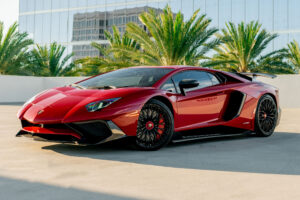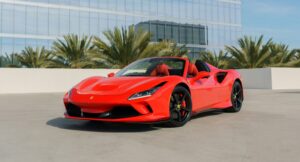Cadillac, an emblem of luxury and a cornerstone in the automotive industry has a storied past that traces back to the early 20th century.
It emerged from the remnants of the Henry Ford Company in 1902, after Henry Ford had a dispute with his investors and left the company. Under the guidance of Henry M. Leland, a master engineer and entrepreneur, the Cadillac Automobile Company was born. Leland’s expertise in precision engineering and his commitment to manufacturing excellence laid the foundation for what would become a leading luxury car brand.
Over the years, Cadillac has positioned itself as a symbol of American luxury and technological innovation. The brand has been intertwined with the nation’s history, from cultural milestones to economic fluctuations.
It has faced the challenges of world wars, the oil crises, and the shifts in consumer preferences brought about by the rise of Japanese cars and the revitalization of the European auto industry. Despite these hurdles, Cadillac has maintained its reputation for quality and has been a trailblazer in automotive advancements, including the introduction of mass-produced V8 engines and pioneering vehicle safety features.
Cadillac’s Founding and Early Achievements
Cadillac’s origins date back to the early 20th century and are characterized by a mix of engineering innovation and entrepreneurial spirit that culminated in the creation of a renowned luxury automobile brand.
Henry M. Leland and the Origins
Henry M. Leland, a master engineer and entrepreneur, played a crucial role in founding Cadillac Motor Company in 1902. Distinct from Antoine de la Mothe Cadillac, the explorer for whom the company was named, Leland’s vision was to produce cars that exemplified precision and quality. Arising from the ashes of the Henry Ford Company, Leland’s expertise in crafting fine, precise tools translated seamlessly into crafting automobiles.
Innovations and Contributions
Under Henry Leland’s direction, Cadillac quickly became a leader in automobile innovation. In 1908, Cadillac was awarded the Dewar Trophy for demonstrating the precision and interchangeability of parts, a considerable feat at the time.
Further solidifying their reputation, in 1912, Cadillac introduced the electric self-starter–developed by Charles Kettering–which effectively eliminated the physically demanding hand-crank and revolutionized the automotive industry.
| Key Innovations | Year |
| Precision production and interchangeable parts | 1908 |
| Electric Self-Starter debut | 1912 |
Cadillac Motor Company and General Motors
General Motors acquired Cadillac in 1909 as a cornerstone of their new vision for a tiered-brand strategy. Having established a reputation for quality and innovation, Cadillac cultivated and reinforced its status as a premier luxury automobile manufacturer.
Following its acquisition, creating the renowned V8 engine in 1915 bolstered Cadillac’s reputation, showcasing its commitment to performance and solidifying its place as an industry standard-bearer for luxury and engineering excellence.
Design and Engineering Milestones
Cadillac has a storied history of design and engineering firsts that revolutionized the automotive industry. From pioneering the concept of automotive styling to introducing advanced powertrains, Cadillac has consistently set design and engineering benchmarks.
Harley Earl and the Art and Color Division
In 1927, Cadillac became the first car manufacturer to have a designated styling department, dubbed the “Art and Color Division,” led by the visionary Harley Earl. Earl’s tenure initiated a new focus on vehicle aesthetics, previously secondary to engineering concerns.
Under Earl’s direction, the Art and Color Division began shaping Cadillac’s identity through innovative design cues.
Iconic Models and Design Elements
During its rich history, Cadillac introduced several iconic models easily recognizable by their design elements.
Tailfins, emblematic of Cadillac in the 1950s, debuted with the 1948 Cadillac. By 1959, the Cadillac Eldorado Biarritz illustrated American luxury with its prominent and lavish tail fins, serving as a status symbol for the era’s optimistic spirit.
Notably, the Cadillac Sixty Special, introduced in 1938, featured a sleek and sophisticated body that influenced future automotive design.
- Notable Models with Unique Design Elements:
- 1948 Cadillac: Introduction of tailfins.
- 1959 Cadillac Eldorado Biarritz: Peak of tailfin size and luxury.
- Cadillac Sixty Special: An archetype of luxury sedan design.
Advances in Engineering
Engineering prowess has also been key to Cadillac’s legacy. The brand was an early adopter of technological advancements, such as the all-steel roof introduced in the 1930s and the powerful V16 engine that appeared in 1930, setting new standards for automotive performance.
In 1957, the Eldorado Brougham represented the pinnacle of luxury and technology, featuring groundbreaking innovations such as memory seats and air suspension.
- Engineering Breakthroughs:
- 1930s All-Steel Roof: Enhanced vehicle safety and paved the way for modern car construction.
- V16 Engine: Provided unparalleled performance in the luxury segment.
- 1957 Eldorado Brougham: Introduced features that have become mainstays in modern vehicles.
Cadillac in Wartime and Economic Challenges
Cadillac’s history during warfare and economic turmoil showcased its adaptability and resilience. The brand’s contributions to wartime efforts were significant, and it faced severe challenges during the Great Depression.
World War Efforts
Cadillac shifted its manufacturing might during World War I to support the war effort. They repurposed their production facilities to produce materials and vehicles needed for combat and transportation.
The mobilization for World War II saw Cadillac once again pivot its manufacturing capacity. This time, it focused on producing military equipment, such as the renowned aircraft engines that played a crucial role in the Allied forces’ air superiority.
The Great Depression and its Aftermath
The onset of The Great Depression in 1929 had a devastating impact on luxury car manufacturers, including Cadillac. Sales plummeted, forcing Cadillac to innovate to survive.
The introduction of the Cadillac LaSalle was a response to the economic crisis, offering a more accessible luxury vehicle to a broader audience. Additionally, post-Depression models like the Series 61 became known for balancing luxury with affordability, helping Cadillac recover and maintain its standing in the luxury automotive market.
Modern Era and Future Outlook
Cadillac has redefined its approach to luxury and performance to align with the dynamic demands of modern consumers and the push toward sustainable innovation.
Transition to Modern Luxury
The company’s adaptation to modern luxury has been evident with models like the Cadillac CT6, which integrates advanced technology and powerful engines to offer a premier driving experience.
The brand has also responded to diverse market needs by downsizing, which enables it to compete globally, particularly in markets like China, where consumer preferences shape the demand for different vehicle sizes and specifications.
Innovation and the Electric Movement
Cadillac’s commitment to innovation is deeply rooted in its embrace of the electric movement.
The introduction of the Cadillac Lyriq signals Cadillac’s serious entry into the all-electric market.
As Cadillac’s first all-electric vehicle, the Lyriq represents a significant step towards an electrified future where luxury and environmental consciousness coexist.
With this leap, the brand is positioning itself as a leader in electric vehicle performance and luxury both in the United States and internationally.

